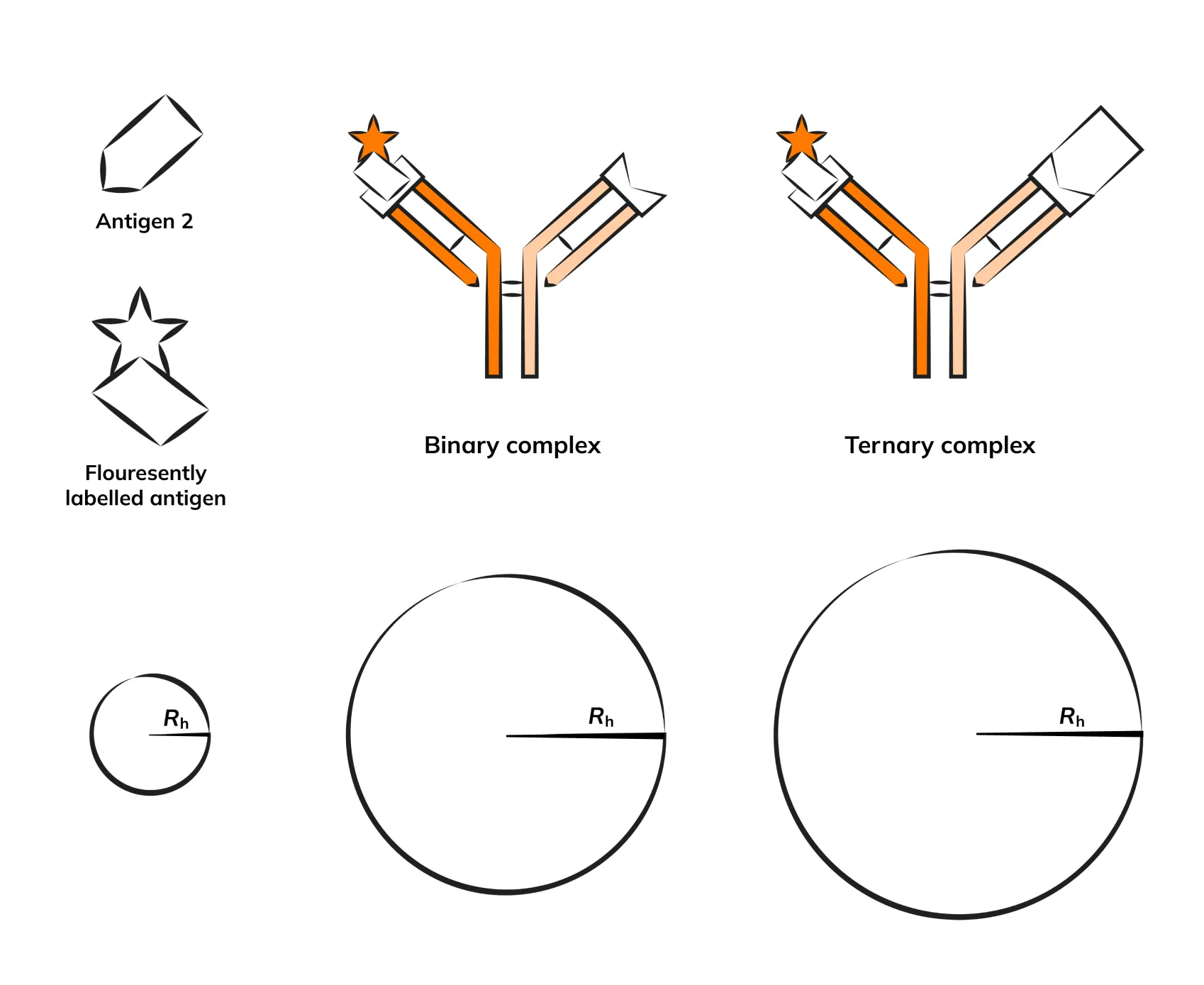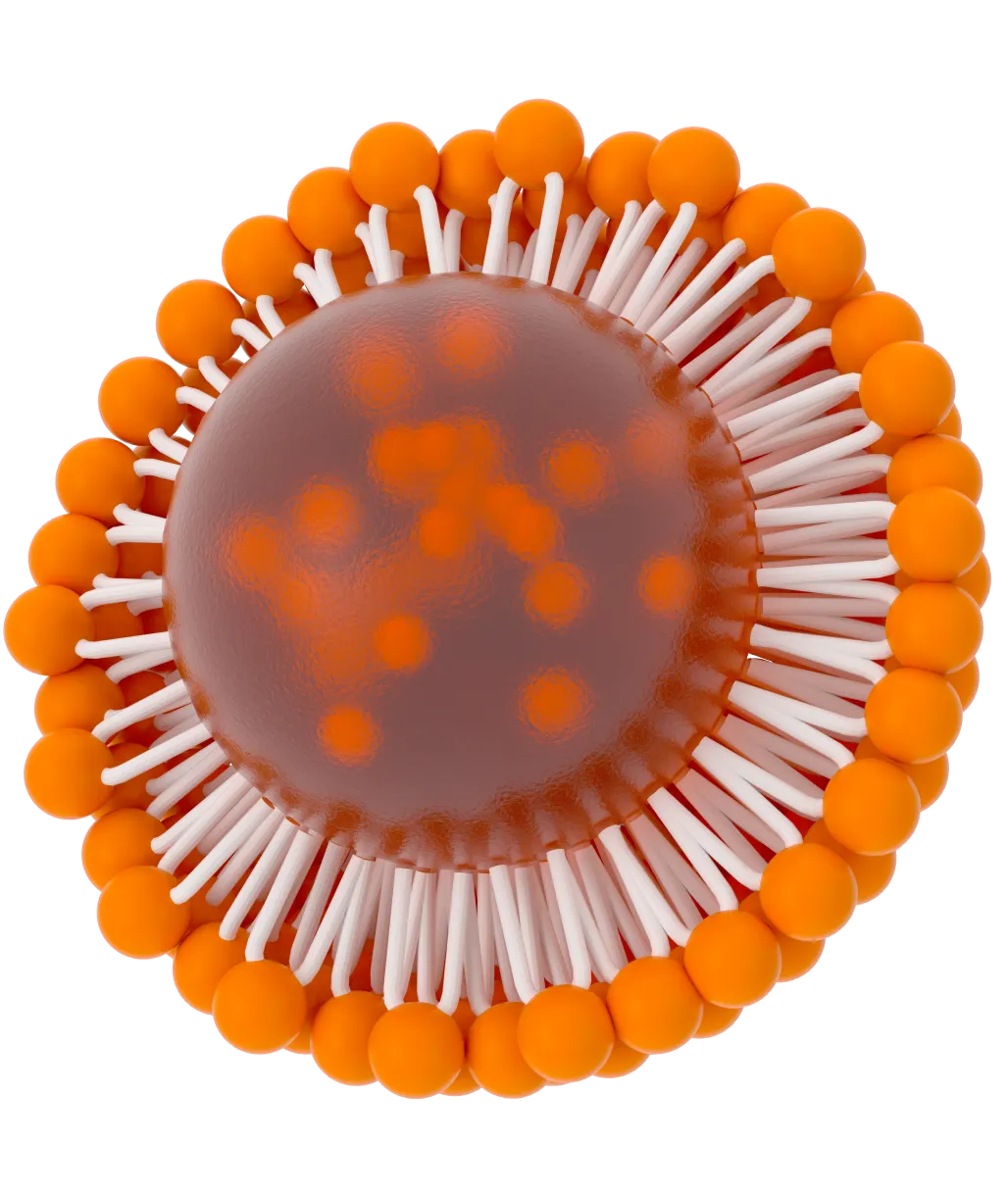What does FIDA bring to research on engineered antibodies?
01
Pre-purification characterisation of antibodies, nanobodies and bispecifics
- FIDA users identify single best clone, saving time and sample material
- Characterisation directly in fermentation media results in a streamlined workflow and early-stage exclusion of non-functional clones
02
Quantity and quality in a single assay
- Simultaneous expression and functional assessment based on quantity and affinity measurement (Kd) in cell supernatant and fermentation media
- Characterise absolute affinities (Kd), size (Rh) of complexes
- 8 QC parameters for an in-depth characterisation
03
Reduced probability of false positive results*
- *In comparison to ELISA-based technologies
- Thanks to first principle, direct measurement.
- Save time thanks to a bulletproof assay
04
Boosted efficiency
- Characterise all parameters of the system in a single experiment
- High throughput autosampler (2x50 vials or 96 well format) saves time
- Quick verification for binary and ternary complex formation
- Use a single technology for pre-purification clone selection and in-depth post-purification characterisation
- Choose the of most efficient clones using combined affinity and expression level measurements
05
Save sample material
- Typical sample usage: 4μL analyte (Protein of Interest), 40 nL indicator (a ligand to Protein of Interest)
- Unpurified and with no buffer constraints
- 120 nL indicator-sample used per triplicate measurement








Rapid confirmation of the binary and ternary complex formation in bispecific antibodies research
Step 1
Fida measures the hydrodynamic radius (Rh) of one of the antigens (fluorescently labelled, i.e. the “indicator”).

Step 2
The absolute size of the complex (Rh) serves as a confirmation of complex formation.

Nanobody clone selection and in depth characterisation
01
Initial Processing
- Immaturazition
- Lymphosites & LHH Isolation
- Clone in Phages & Culture in E-Coli
- Biopanning
Nanobody clone selection and in depth characterisation
02
FIDA Clone Selection
Optimal Clone Selection based on Affinity (Kd) & Expression Levels, measured in a single assay
FIDA users perform assessment of functional performance (affinity) together with assessment of expression level.
Having two measurements at the same time increases their ability to select the best protein candidates on the first attempt.
FIDA users perform assessment of functional performance (affinity) together with assessment of expression level.
Having two measurements at the same time increases their ability to select the best protein candidates on the first attempt.
Nanobody clone selection and in depth characterisation
03
Single Best Clone Purification
This allows FIDA users to avoid unnecessary purification of poorly performing clones or nanobodies, saving time and sample material.
Nanobody clone selection and in depth characterisation
04
In-depth characterisation
After FIDA users select and purify the single optimal clone, they adopt FIDA for in-depth characterisation of absolute affinities (Kd) and size (Rh).
Common challenges in research on engineered antibodies

Challenge


Clone efficacy and stability
Affinity and expression levels measurements delivered in a single assay, before purification stage allow for efficient clone selection, process optimisation and sample savings. On top of that a simultaneous measurement of extent of protein aggregation or misfolding, allows for concurrent quality control.
Protein stability
FIDA delivers 8 QC parameters, such as aggregation, size and polydispersity, which help to assess protein stability and optimise production.
Protein specificity
FIDA analyzes the interaction with target antigens in solution. This provides information on the binding affinity and specificity of nanobodies, which is later used for activity optimization and reduction of the off-target effects.
Screening
With its low sample consumption, FIDA can be used as a tool to screen libraries of nanobodies for their ability to bind specific antigens.



Become a user
Your laboratory instruments should serve you, not the other way around. We’re happy to help you.






























